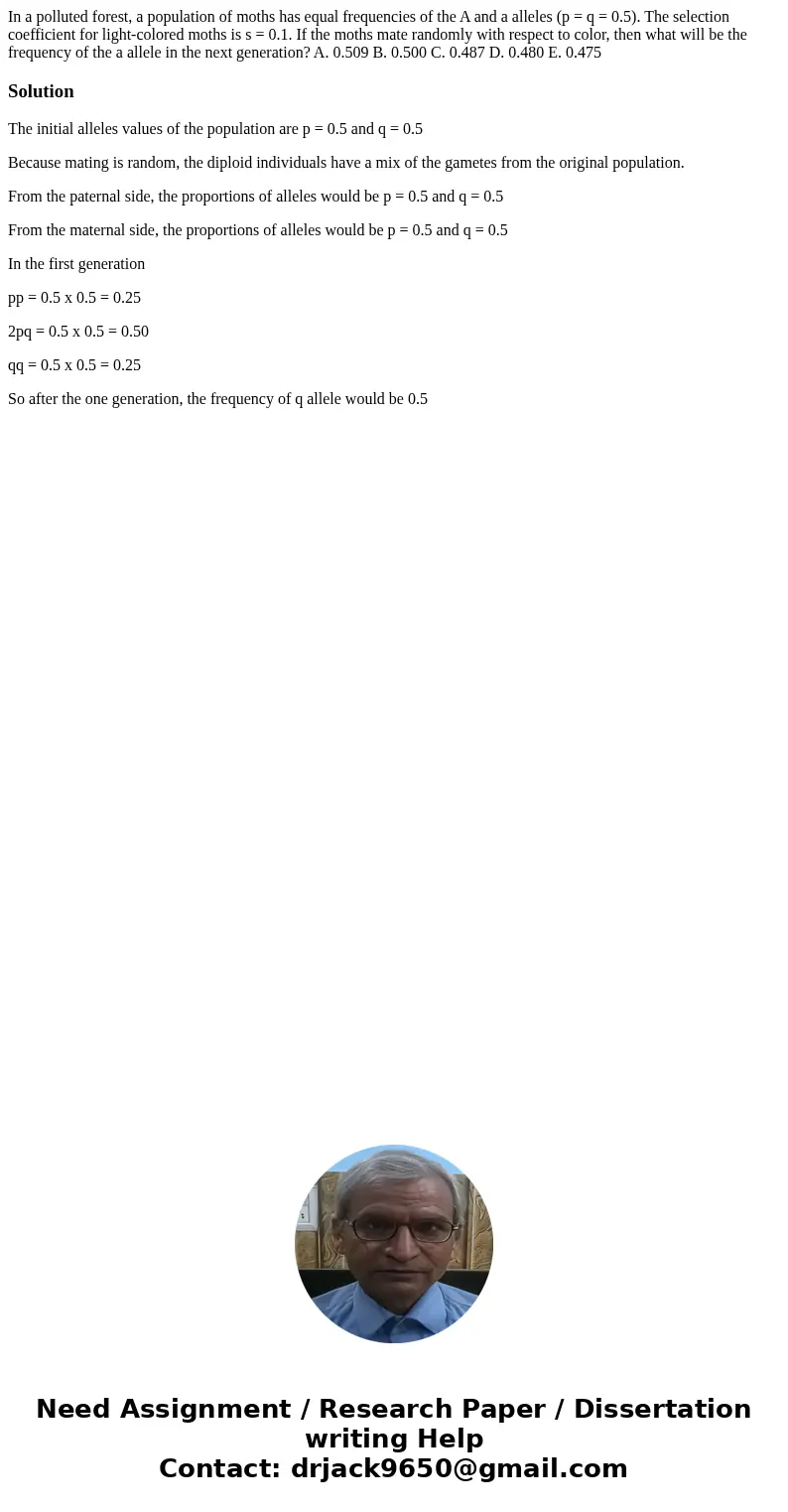In a polluted forest a population of moths has equal frequen
In a polluted forest, a population of moths has equal frequencies of the A and a alleles (p = q = 0.5). The selection coefficient for light-colored moths is s = 0.1. If the moths mate randomly with respect to color, then what will be the frequency of the a allele in the next generation? A. 0.509 B. 0.500 C. 0.487 D. 0.480 E. 0.475
Solution
The initial alleles values of the population are p = 0.5 and q = 0.5
Because mating is random, the diploid individuals have a mix of the gametes from the original population.
From the paternal side, the proportions of alleles would be p = 0.5 and q = 0.5
From the maternal side, the proportions of alleles would be p = 0.5 and q = 0.5
In the first generation
pp = 0.5 x 0.5 = 0.25
2pq = 0.5 x 0.5 = 0.50
qq = 0.5 x 0.5 = 0.25
So after the one generation, the frequency of q allele would be 0.5

 Homework Sourse
Homework Sourse